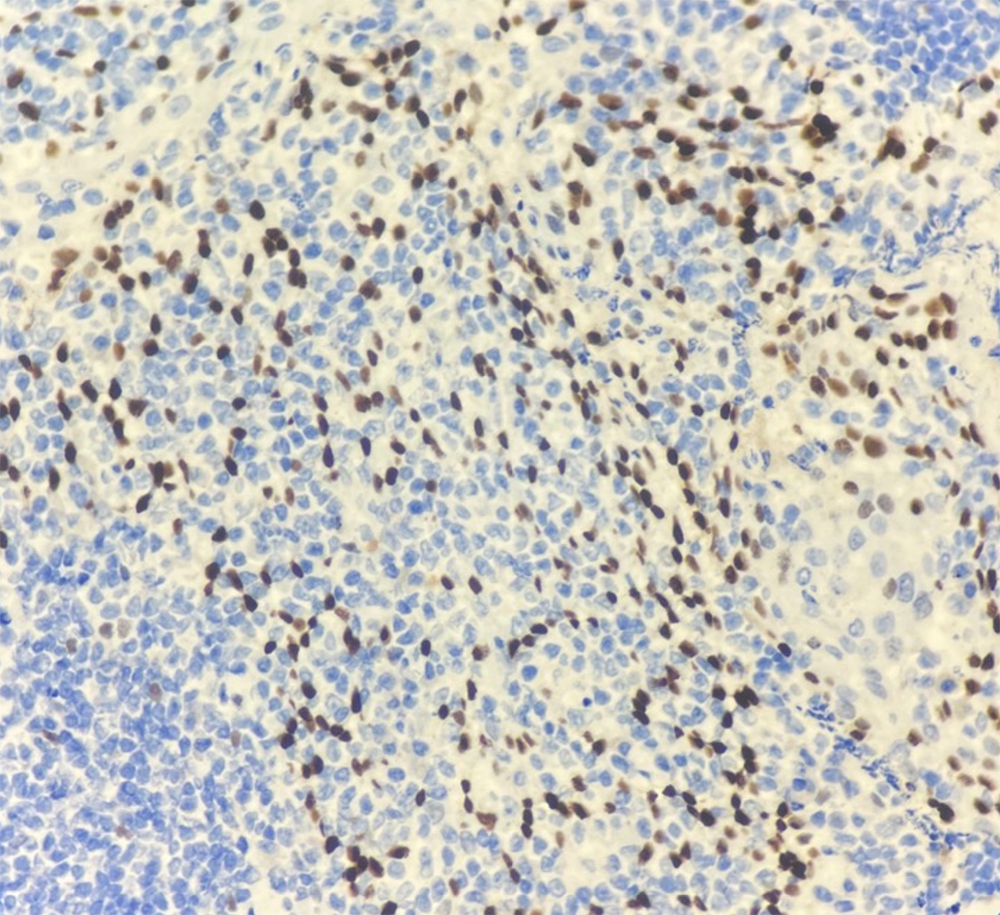
p63 Antibody (DA097)
p63 Antibody (DA097)
Recombinant monoclonal rabbit antibody
Description
p63 is a transcription factor that regulates many cell activities, including cell proliferation, maintenance, differentiation, adhesion, and apoptosis.1 It has been found to be a sensitive and specific marker of myoepithelial and basal cell populations in prostate, breast, skin, and salivary gland. Additionally, p63 has also demonstrated immunohistochemical utility in identifying benign and malignant breast lesions.2 In prostatic carcinomas, it can also be used to recognize benign glands adjacent to malignant glands.3 p63 can also be used to differentiate adenocarcinoma of the lungs, where it is usually negative, from squamous cell carcinoma, which can be useful for advanced stages of the carcinoma where surgery is no longer an option.4 Since p63 stains positively in the nucleus and P504S stains in the cytoplasm, it is easier to judge the results if the two are combined.
References
2. Stefanou, D et al. "p63 expression in benign and malignant breast lesions." Histology and histopathology vol. 19,2 (2004): 465-71. doi:10.14670/HH-19.465
3. Jiang, Zhong et al. "Using an AMACR (P504S)/34betaE12/p63 cocktail for the detection of small focal prostate carcinoma in needle biopsy specimens." American journal of clinical pathology vol. 123,2 (2005): 231-6. doi:10.1309/1g1nk9dbgfnb792l
4. Camilo, Ricardo et al. "Expression of p63, keratin 5/6, keratin 7, and surfactant-A in non-small cell lung carcinomas." Human pathology vol. 37,5 (2006): 542-6. doi:10.1016/j.humpath.2005.12.019
Specifications
Order information
| RMA1A026 | Concentrate | IVD(R) |
| RMA1A026 | 10 ml Ready to use | IVD(R) |
| RMA1A026 | 6 ml Ready to use | IVD(R) |
| RMA1A026 | 3 ml Ready to use | IVD(R) |


